Another of our earlier starts this morning. We’d selected the 7 am breakfast sitting as we needed to checkin for the Orkney Islands ferry by 7.45 am. Back to the full Scottish for me this morning but I opted for a potato scone instead of toast. The Scottish potato scone looks like a pancake and their flapjacks look like Anzac biscuits. Very confusing!
The checkin for the ferry was very streamlined and after parking the car in “lane 1” , we went for a little walk up the headland to take a few pictures. A couple walked past and we fell into conversation…they were Queenslanders!
Back to the car and soon we were driving on to the ferry and climbed up to the upper decks to settle in for the 90 minute journey from Scrabster to Stromness, on the “Mainland” island of Orkney. Orkney is an archipelago of about 70 islands,but only 20 are inhabited and we would only visit one today. The ‘Heart of Neolithic Orkney’ is a group of 5,000-year-old sites on Mainland, the largest island including Skara Brae, a preserved village. I remember being fascinated when I first heard about Skara Brae and how it was discovered but I’m getting ahead of myself..
The sailing was reasonably smooth with just a bit of rocking, we relaxed and had a coffee and enjoyed the sunshine streaming in the windows, this has been the best weather day of our trip so far!
After the ferry docked in Stromness we were back on the road passing by the bucolic small farm landscape, miles of green fields , dotted with sheep and little stone farm cottages. We drove out to the west to see Yesnaby cliffs, which were more interesting to Neil for the ruins of an anti aircraft battery from WWII.
Then we had a short drive to the site of Skara Brae. In the winter of 1850, a great storm battered Orkney. The combination of wind and extremely high tides stripped the grass from a large mound, then known as “Skerrabra” and it revealed the outline of a number of stone buildings – something that intrigued the local laird, William Watt, of Skaill, who embarked on an excavation of the site. In 1868, after the remains of four ancient houses had been unearthed, work at Skerrabra was abandoned. The settlement remained undisturbed until 1925, when another storm damaged some of the previously excavated structures.A sea-wall was built to preserve these remains, but during the construction work, yet more ancient buildings were discovered. Radiocarbon dating in the early 1970s confirmed that the settlement dated from the late Neolithic — inhabited for around 600 years, between 3200BC and 2200BC. So when we visited the site we were seeing buildings that were over 5000 years old! Much, much older than the pyramids or Stonehenge.
The exhibit was great, at the beginning they had a recreated model of what they believe the houses would have been like and it really helped visualise the tiny village as we walked about the site. It’s set on one of the many stunning beaches in the Orkneys, the colour of the water was amazing under the bright sunshine.
Our tickets also gained us entry to Skaill House, a fine 17th Century mansion.. Home of William Graham Watt, 7th Laird of Breckness, who unearthed Skara Brae in 1850. The house was originally built in 1620 by the(Bishop of Orkney , and has been added to by successive generations over the centuries. The guide at the entrance asked us where we were from and when we told him he said “most Australian’s are very keen to see this…” and led us to a lovely dinner set displayed behind glass. It was the dinner set used on Captain James Cooks final voyage!
Next we dropped in briefly to the Orkney Brewery. Neil had enjoyed one of their “Northern Lights” pale ales last night and was interested to see the brewery.
We set off across to the northern edge of mainland to see the Broch of Gurness. We were reated to more stunning scenery but the TomTom also treated us to a shockingly bumpy “short cut” – I think Neil was seriously worried about the cars axles!
Brochs are unique to Scotland. There are more than 500 of these towers of stone, mostly in the northern and western Highlands and the islands.Many brochs stood alone, but sizable villages often surrounded those in Orkney. The broch village at Gurness is a ruin and much shorter than it once was but the excavation was excellent and it was easy to get a feel for the houses and rooms.
Kirkwall is Orkneys largest town and we stopped there to see St Magnus cathedral, referred to as “The Light of the North”. The cathedral took over 300 years to build and dominates the Kirkwall skyline. It is the best preserved medieval cathedral in Scotland and built in 1137 at a time when Orkney was ruled by the Vikings. A stone minster was founded by Viking Earl Rognvald in memory of his uncle St Magnus who was a martyr. It’s built mostly of huge rough red bricks and the interior is lovely.
Nearby are also the atmospheric ruins of the palaces of Kirkwall’s Bishops and Earls.
Leaving the ruins behind we drove on south for a little dose of military history. In 1914 the Royal Navy’s Grand Fleet moved to Scapa Flow, a huge natural harbour in the Orkneys, as it was one of the largest sheltered harbours in the world and was ideally located to take on a German Fleet based in the Baltic. The narrow passages between the five islands on the eastern side of Scapa Flow were defended by sinking blockships. At the start of WWII further blockships were sunk and submarine nets were deployed, but proved inadequate.On 14 October 1939, the German U-Boat, U-47, made it’s way past the blockships at high tide and torpedoed HMS Royal Oak which was lying at anchor in Scapa Flow. 833 members of the Royal Oak’s crew were killed. Within a month, Winston Churchill visited Orkney and ordered that work begin on the construction of four permanent barriers.
As we drove across the barriers we could see some of the wrecks still rusting away in the water.
We also stopped to see the little “Italian Chapel”. Over 500 Italina prisoners of war were sent to Orkney to construct the Churchill Barriers, and they were given permission to join two nissan huts together to create a catholic chapel. Among the Italians in the camp was an artist, Domenico Chiocchetti, and he was given the task of decorating the chapel. The interior artwork is extraordinary!
The time was getting on and we had a ferry to catch but we had time to stop and see two final ancient sites. The Standing Stones of Stenness and the Ring of Brodgar, There are only 4 of the original 12 Standing Stones left now but at a maximum height of six metres, the monument is visible for miles!. The Ring of Brodgar was built around 2500-2000BC and covering an area of almost 8,500 square metres it is the third largest stone circle in the British Isles. Luckily we arrived about 5 minutes before 3 busloads of tourists descended on the site so we could absorb the atmosphere of the ancient site without a noisy crowd to ruin the experience.
Actually, other than that one time, we really felt very UN crowded in Orkney. I guess its so far off the beaten track that it doesn’t draw the same crowds as, say, the Isle of Skye. The ferry trip home was also relaxed and uncrowded. Having missed lunch again we opted to eat an early dinner in the boats restaurant, just a burger, a beer (another Orkney Brewery drop!) and a glass of wine to finish off an amazing day.



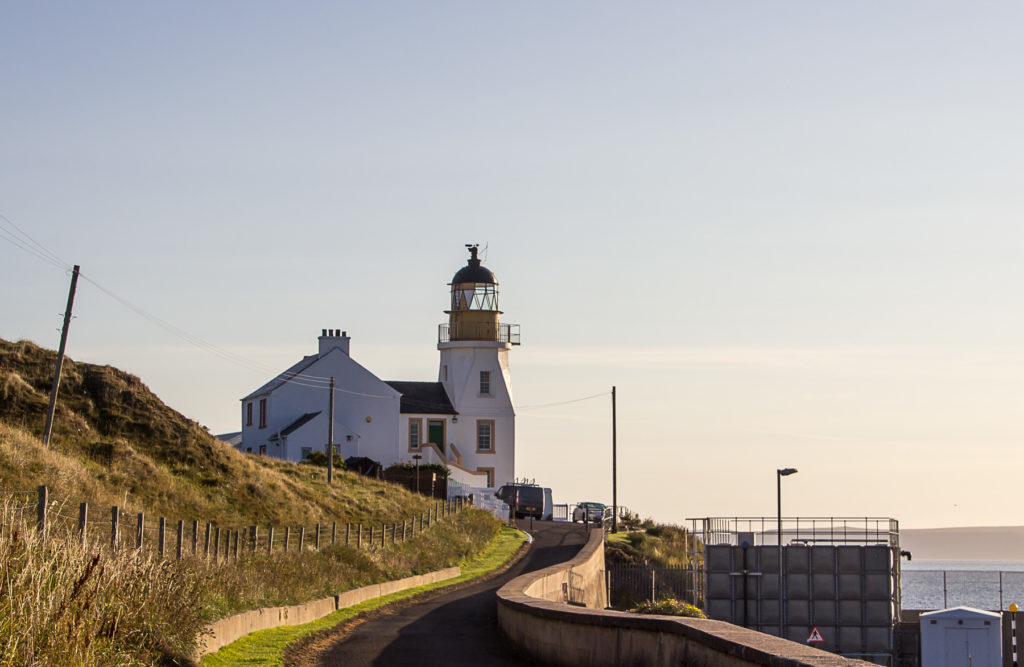
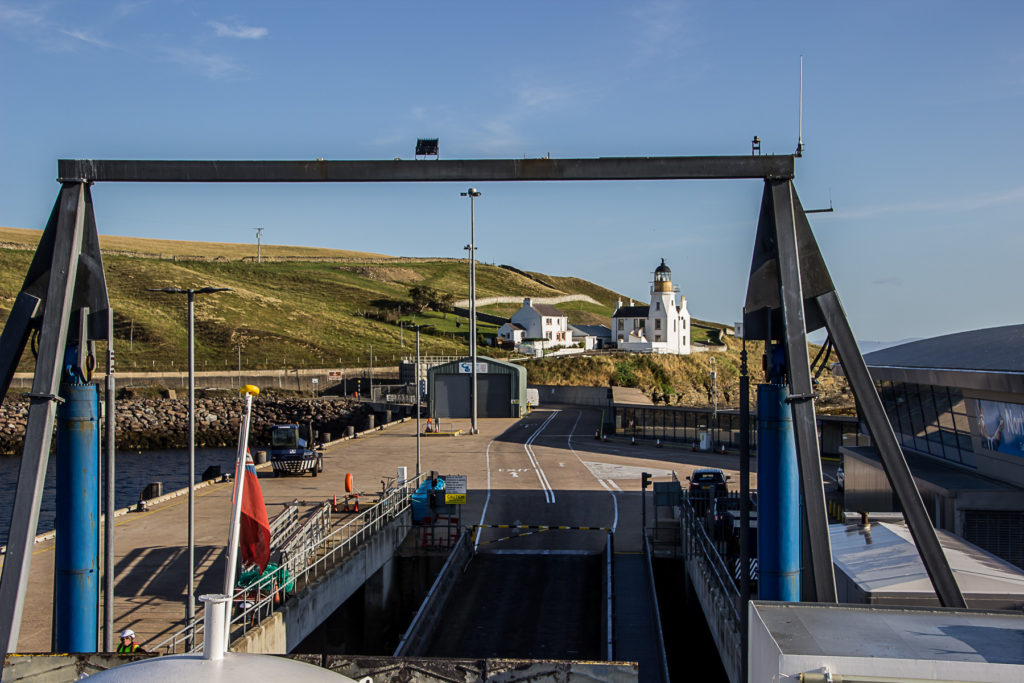
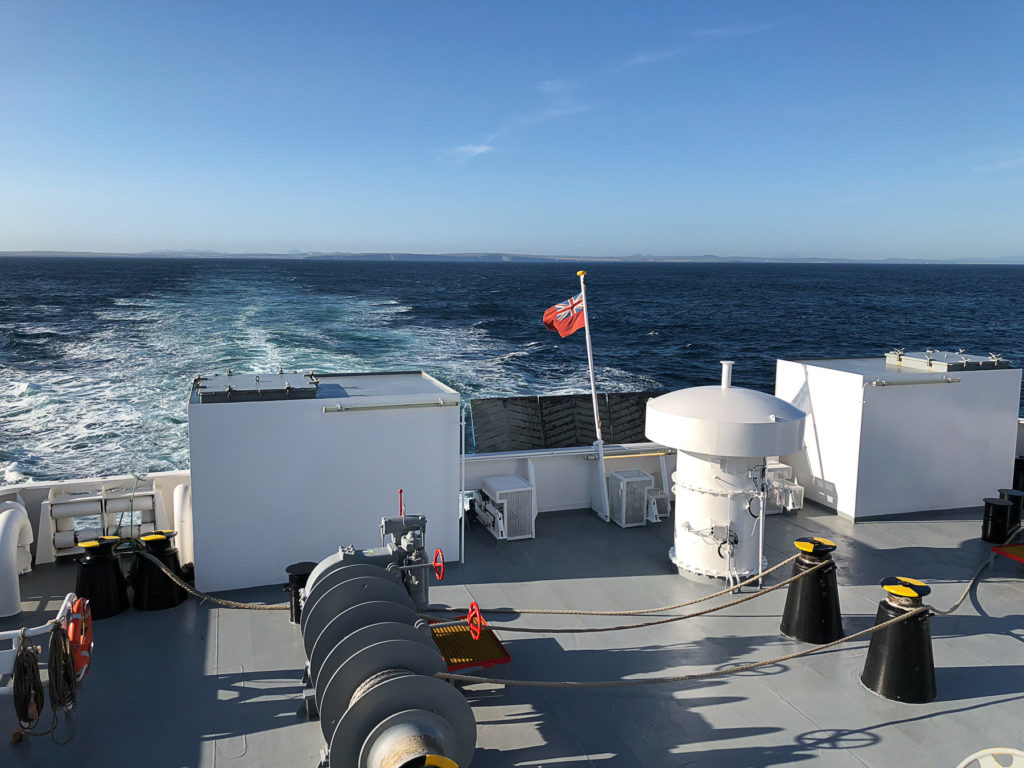
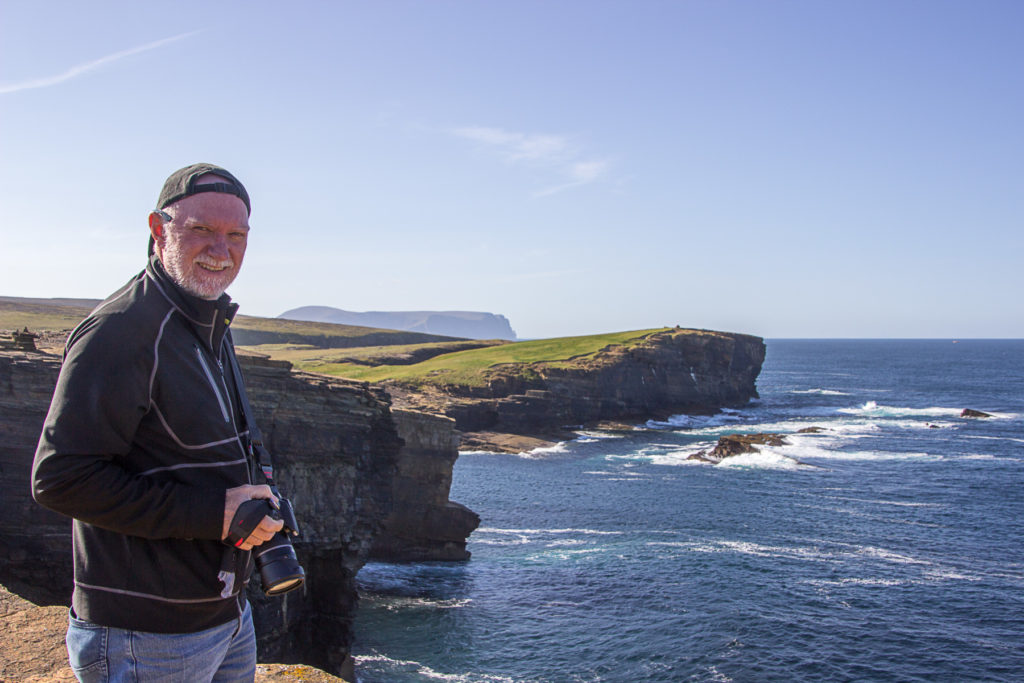
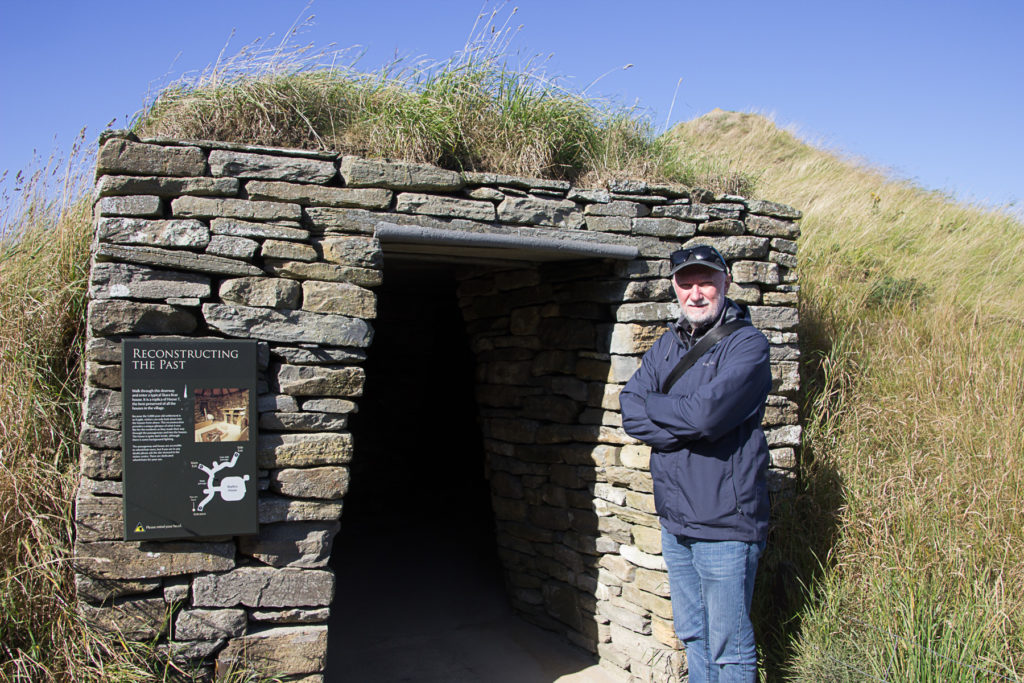
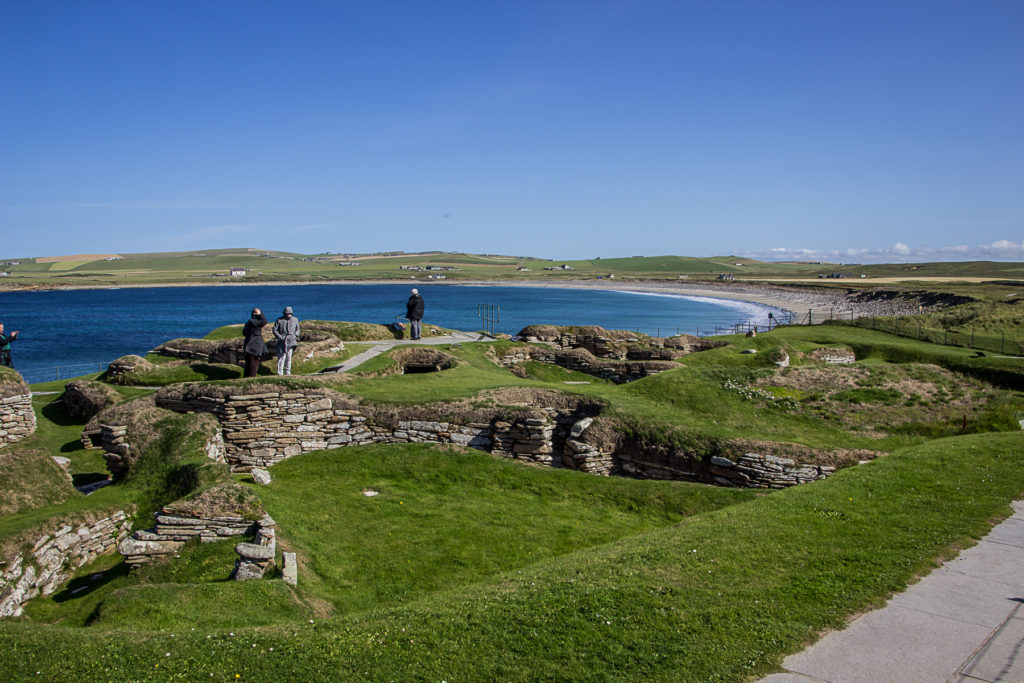
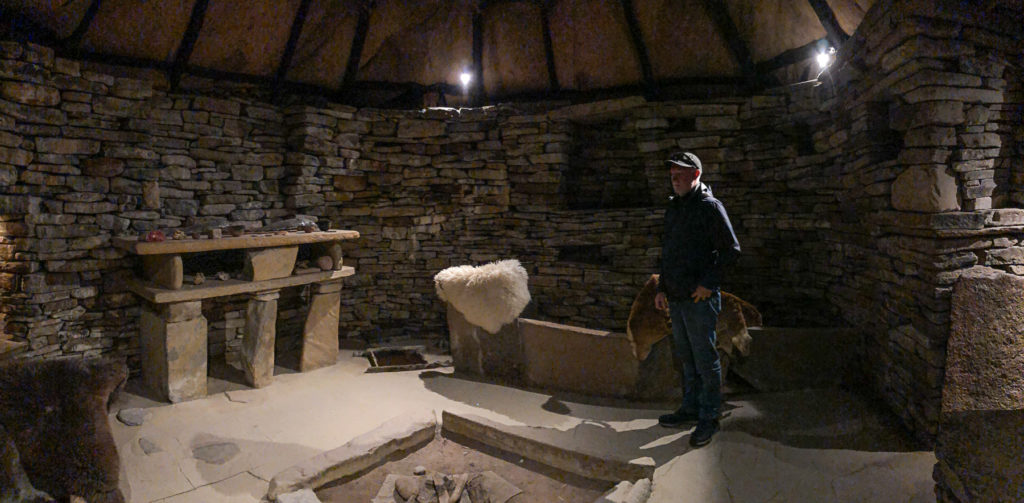
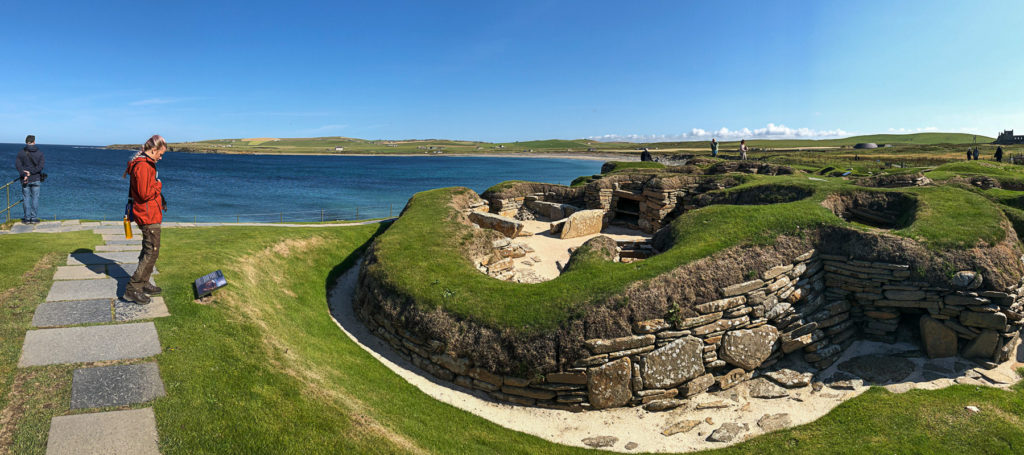
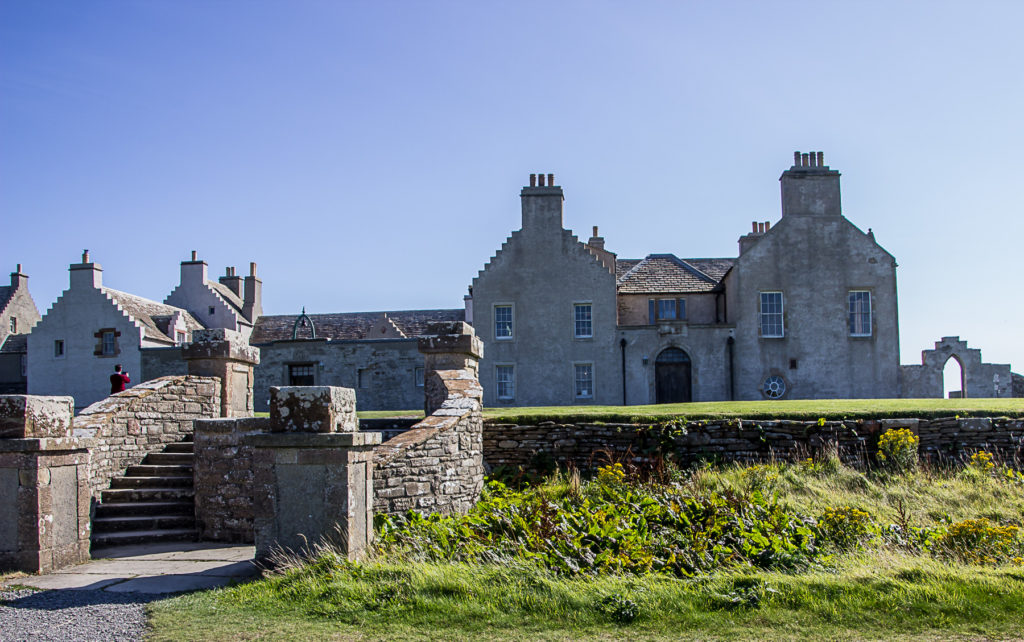

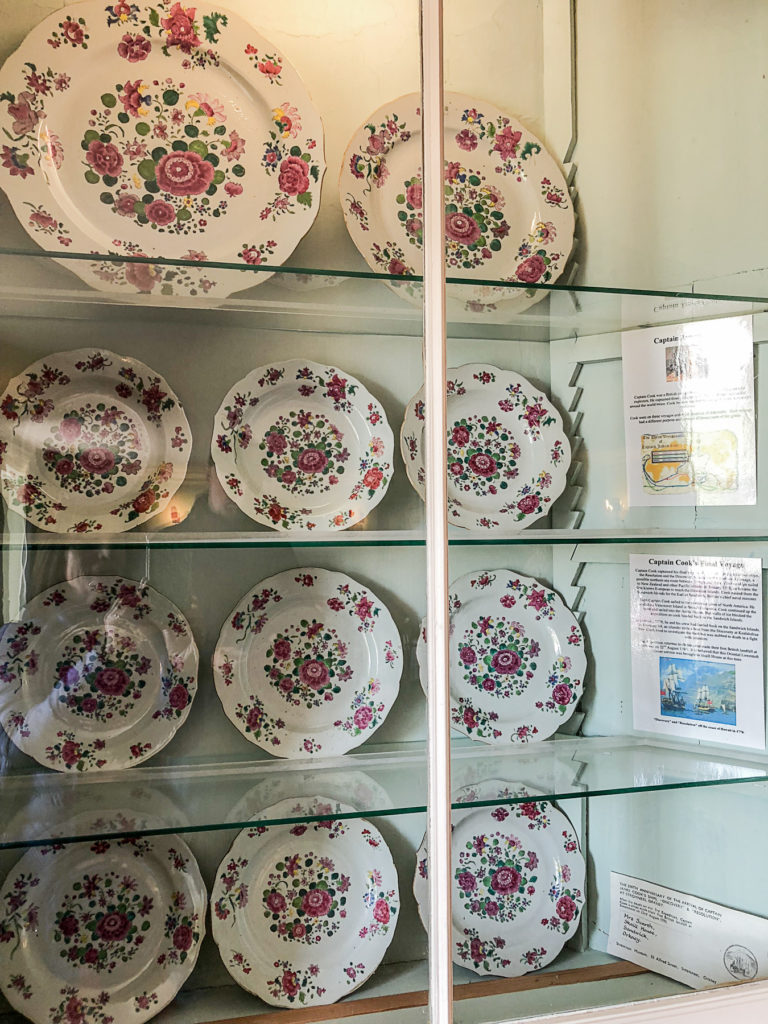
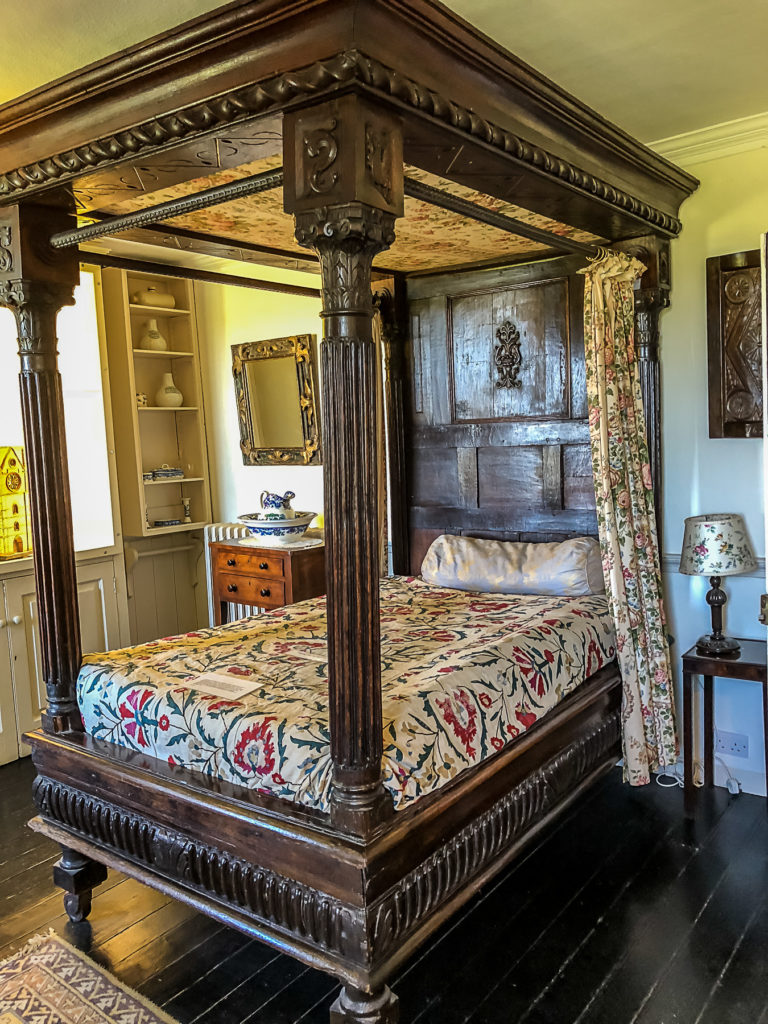
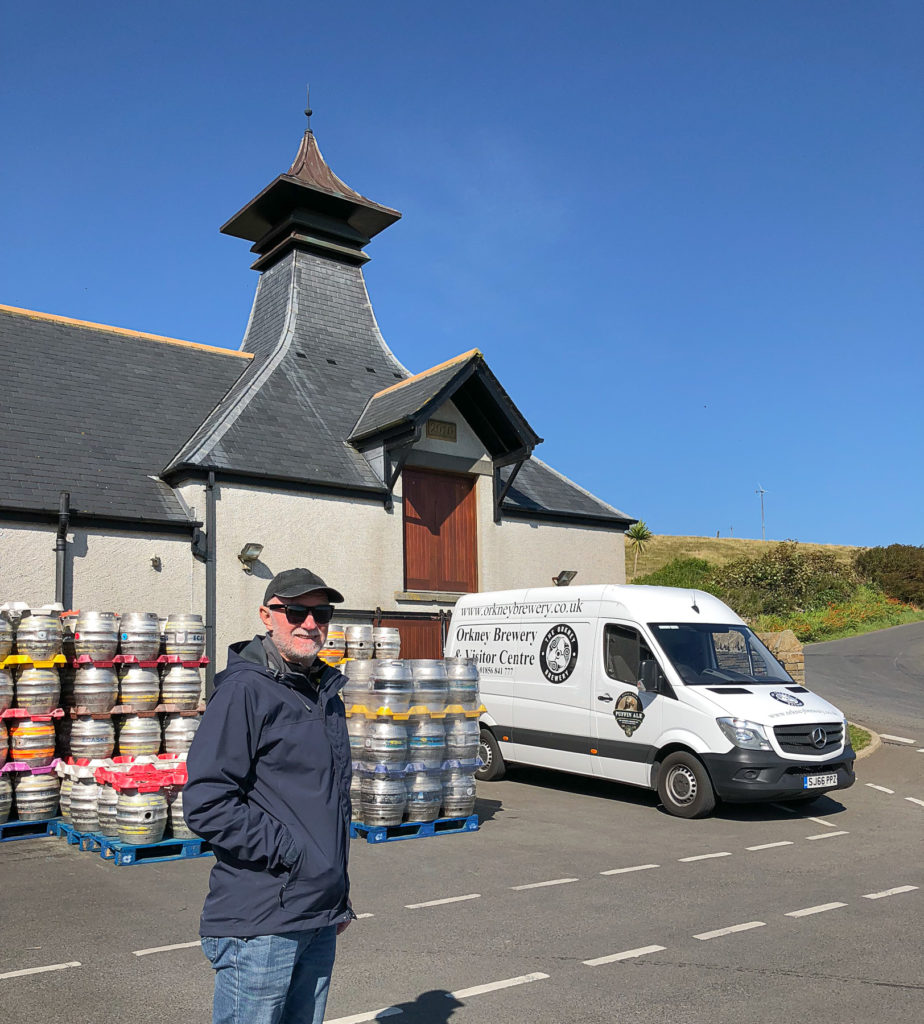
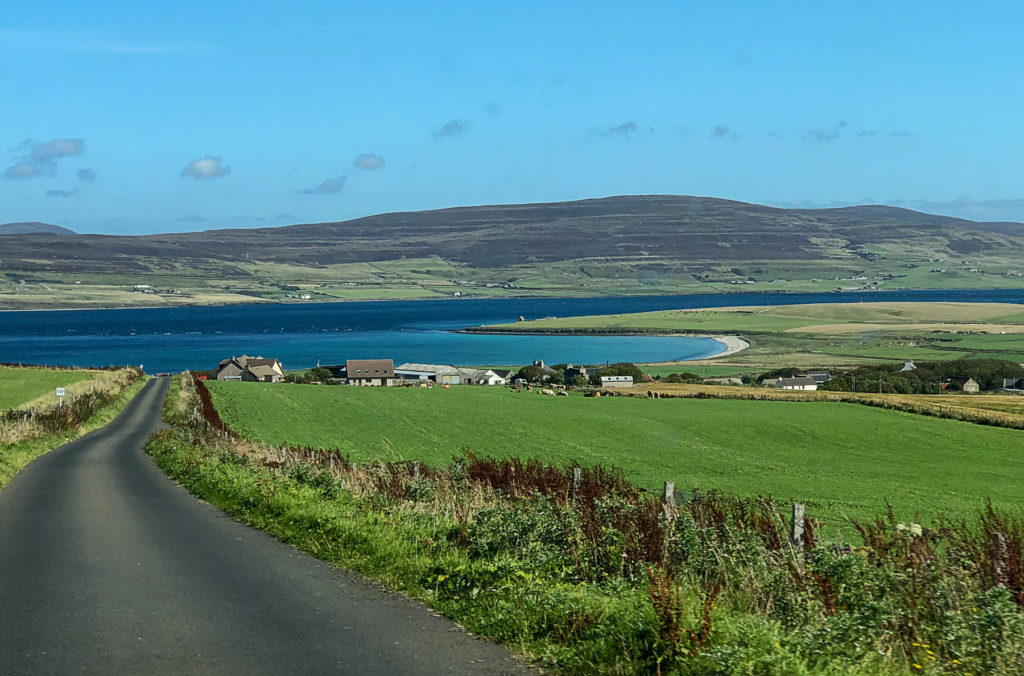
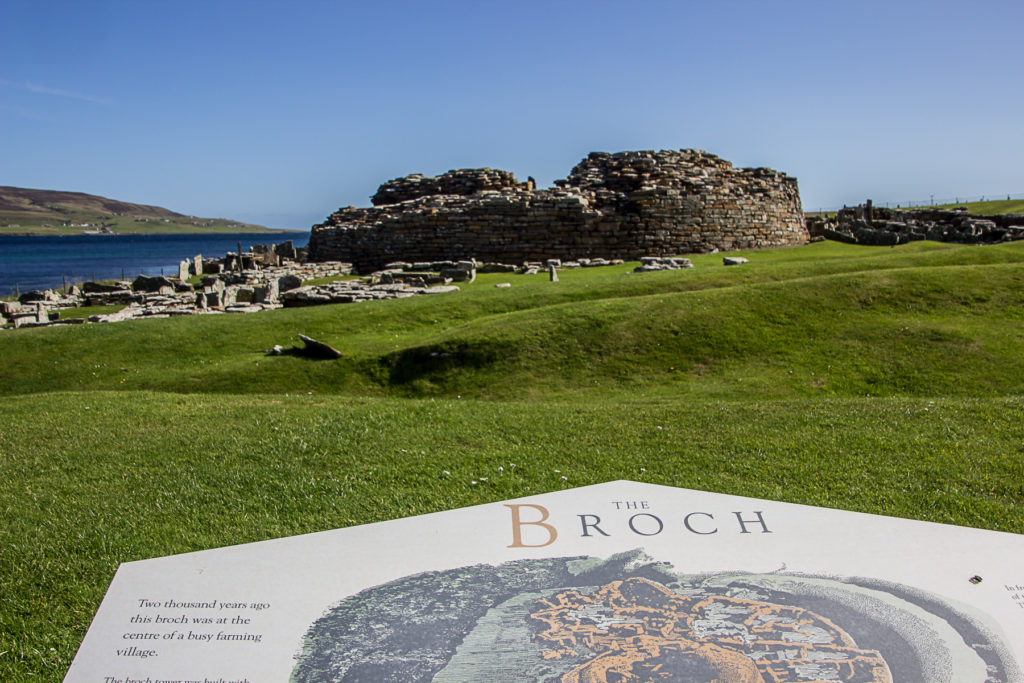





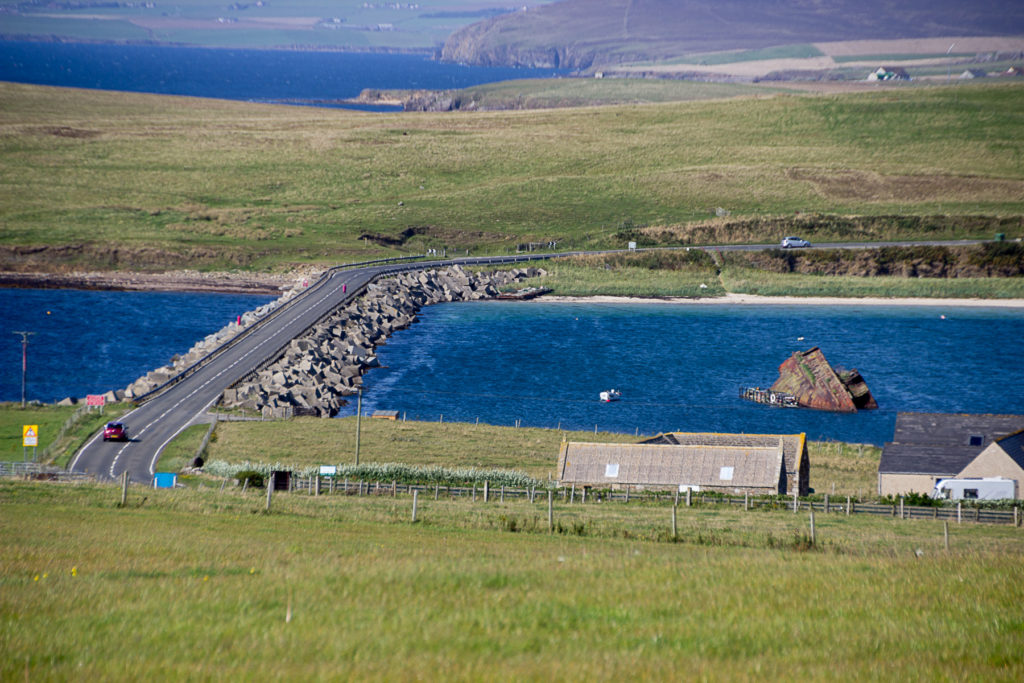
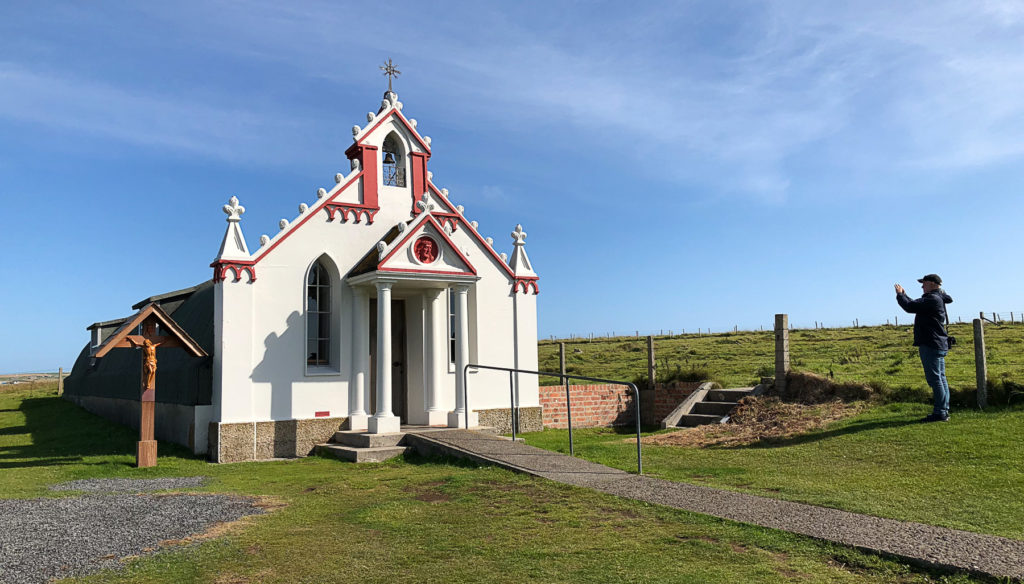
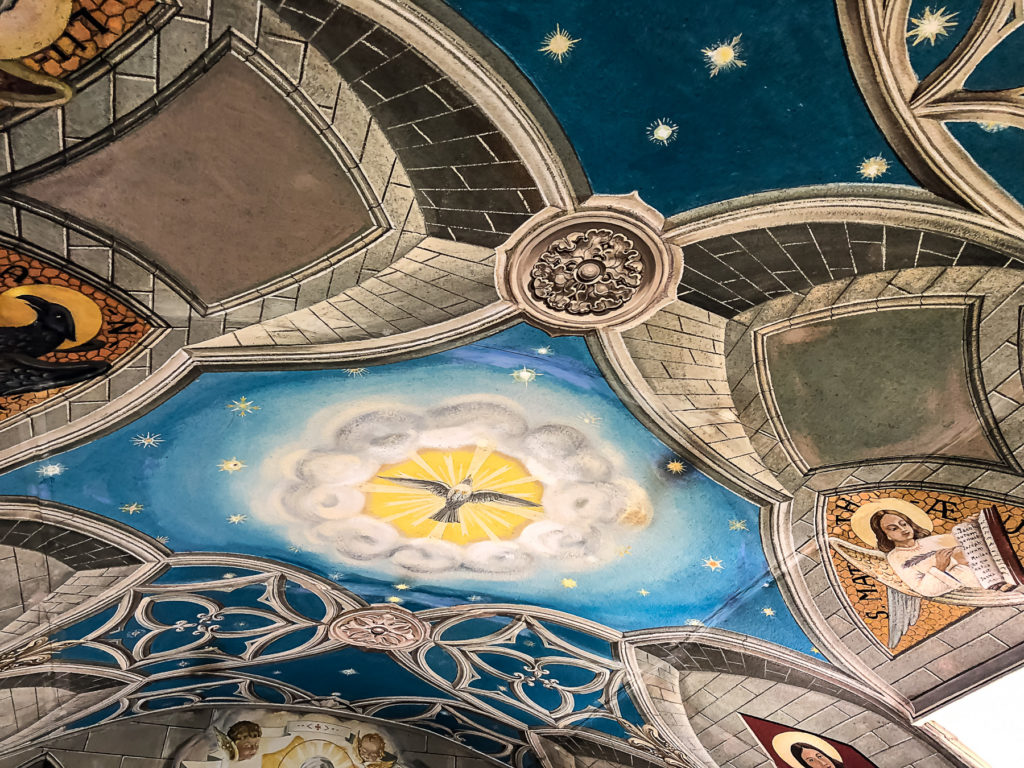
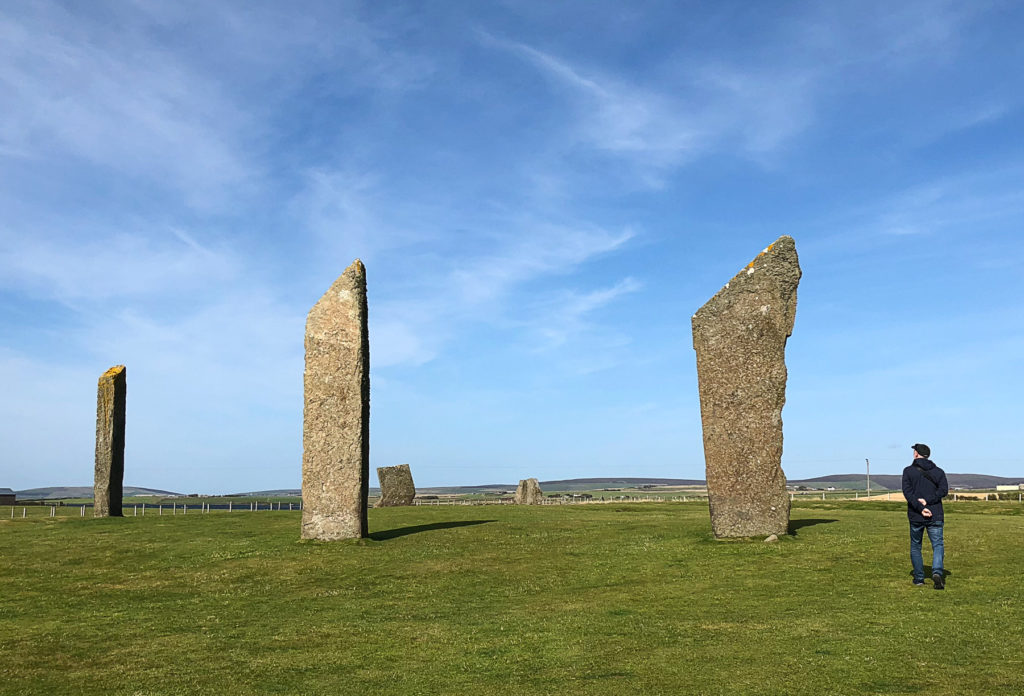

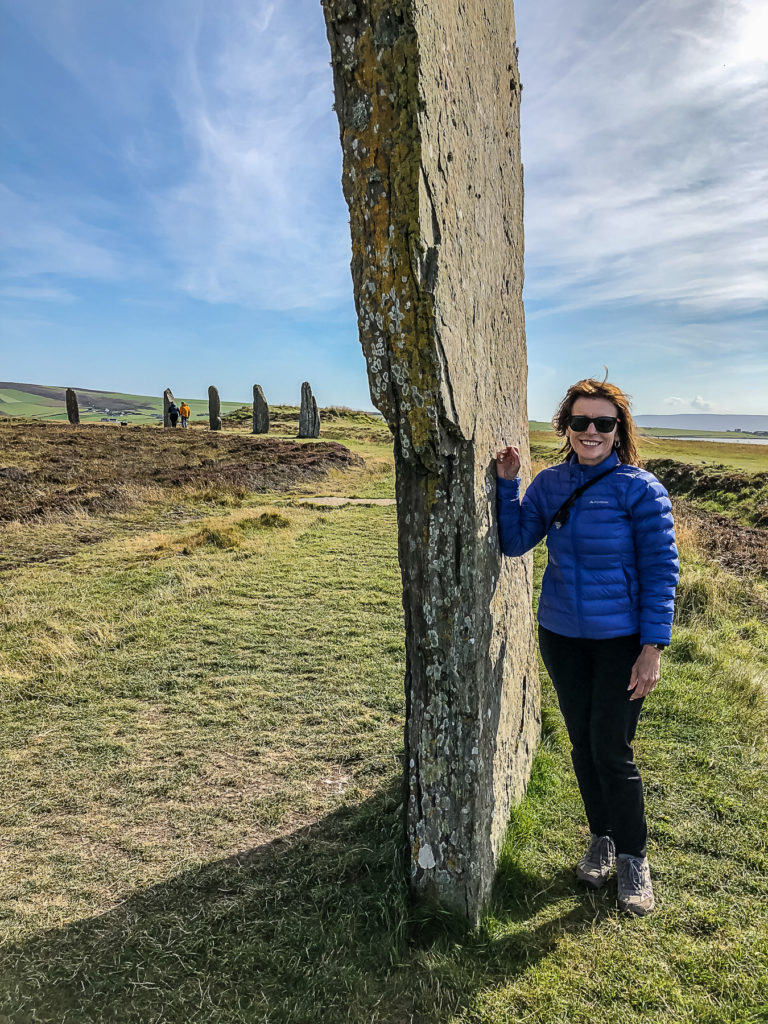

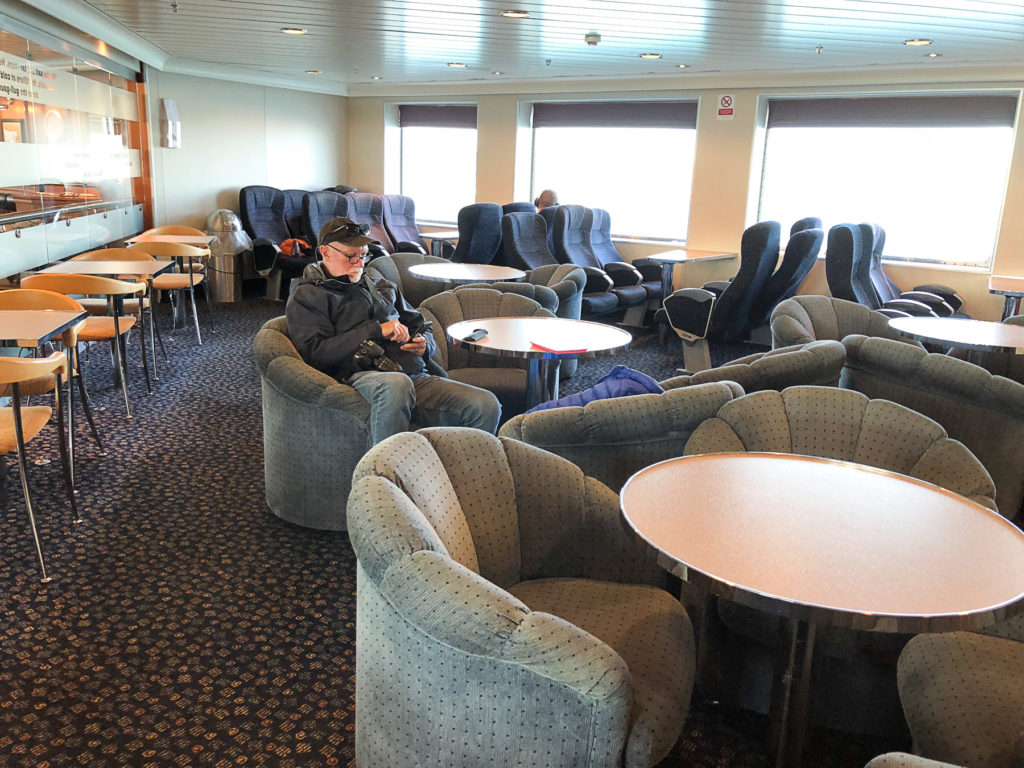
Loved the historic sites you saw today and the information behind them.
I thought Neil was trying out a new look with the cap on backwards, it suited him